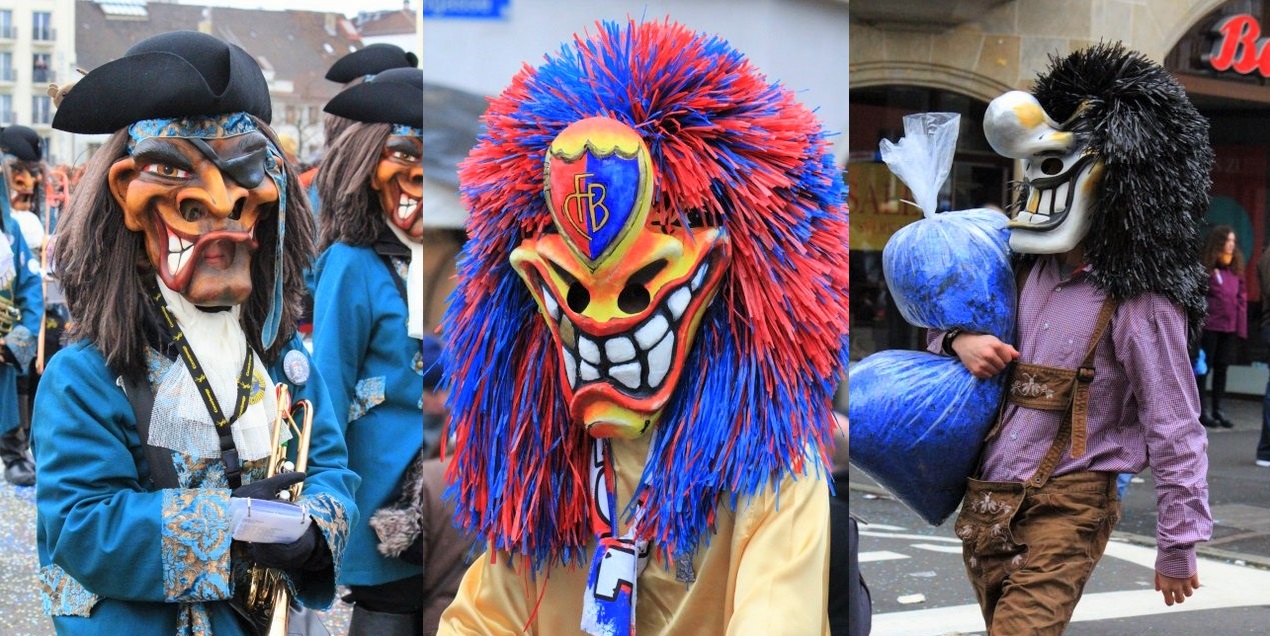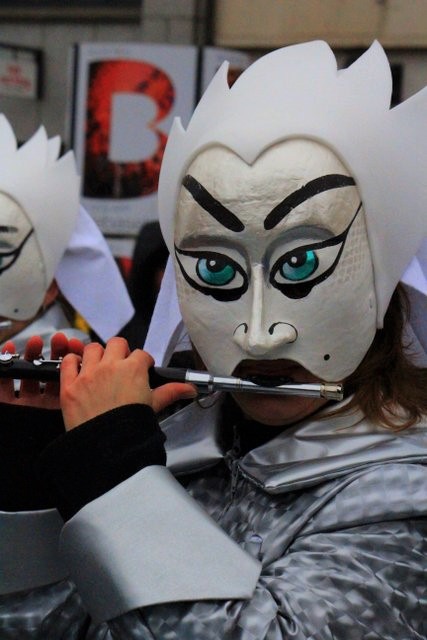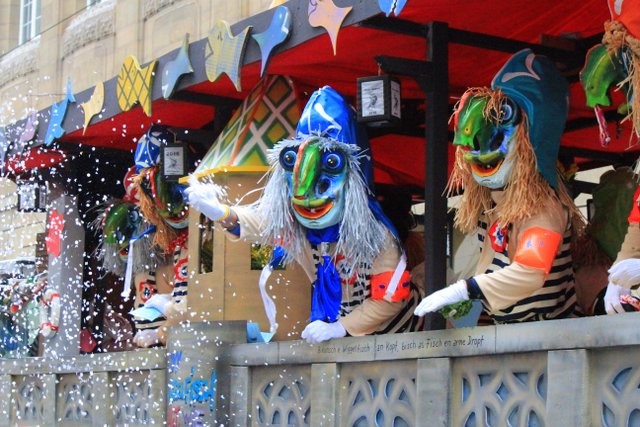THE Swiss are reputed for being a meticulous and hard working people, with an organised and functional system of living and a clean, beautiful country. What you might not realise is that once a year, in the town of Basel, Swiss people take those stereotypes and throw them out the window at one of my favourite festivals in the world: Fasnacht.
What is Fasnacht?
Fasnacht is a three-day festival that begins the week after Ash Wednesday. At 4am on Monday, officials turn off all the lights in the city and groups parade the streets in complete darkness, only illuminated by the light of their own lanterns. This is Morgenstreich, the first of two corteges - processions that mark some of the most important events of Fasnacht.
Though it occurs in other towns throughout Switzerland, and in some parts of Germany, Fasnacht in Basel is really something unique, marked by a “jovial, yet serious melancholic atmosphere.” Groups that take part in Fasnacht choose a sujet, usually based on local, national or international events or politics, which informs the theme of the group’s costumes, lanterns and leaflets.

A murky history
Fasnacht’s historical origin is unclear, due in part to a fire that ruined official archives, but it is thought that the festival might have originated from a bloody jousting tournament that happened in the late 1300s. The first official record of the carnival, including the sale of masks, was much later in 1529. This was later followed by bans on the “highly perilous custom of wearing masks, on penalty of corporate punishment or death” in 1715 and a ban on drumming and procession in 1798. The first orderly procession was organized in 1802.
The characters and characteristics of Fasnacht
No matter the chosen ‘sujet’, Fasnacht is characterised consistently by seven elements:
Plakette – sold in bronze, silver and gold, Fasnacht badges help raise money to cover the costs assumed by the groups who participate in the event. Though anyone can attend Fasnacht for free, most people purchase a Plakette and wear it on their coat to show their support.

Costumes – Probably the most distinct thing about Fasnacht is the elaborate costumes and masks worn by participants. Though creativity abounds, there are six traditional figures that dominate the costumes: Alti Dante, Blätzlibajass, Domino, Harlequin, Pierrot, Ueli and Waggis. These characters have developed over time as a reflection of the social and political circumstances in Europe.
Gugge music - Gugge bands, made up of elaborately costumed drummers and brass musicians, fill the city streets during official parades, daily wanderings and impromptu late night sessions tucked away in the alleys of Basel’s old town. If you’re lucky, you might also find yourself enjoying a late night drink when a group descends upon the restaurant and fills every available space with their drums, trumpets and tubas. Watch out for the trombone!
Cliques – If there is one thing about Fasnacht you won’t forget, it will be the music – if only because the memorable tunes won’t ever leave your head. Cliques are traditionally larger groups of musicians, distinctive from the Gugge bands by their exclusive inclusion of drummers and flutists. Also costumed to reflect their chosen sujet, the music from the Cliques competes with that of the Gugge almost around the clock during the three days of the festival.
Lanterns – Playing an important role in Fasnacht, painted and illuminated lanterns portray each group’s chosen ‘sujet’. The large structures, sometimes as big as three metres high, are either carried on the shoulders of appointed members of the group or pulled in wagons during the processions. On the Tuesday of Fasnacht, all the lanterns gather in a square, where the public can view them lit up.
Wagen – Used in official processions, these large, decorated floats reflect the group’s theme. Closely associated with the Wagen are the Waggis who ride inside them. Playful and borderline mean-spirited, the Waggis are masked troublemakers who interact with the crowds lining the streets during the parades. This is where a spectator learns the consequences of not having their Plakette! While those wearing the badges will be playfully tossed oranges, flowers, candies or other treats, those not wearing them will likely receive a face full of confetti.
Confetti – An essential part of the Fasnacht experience is the confetti. Lots of it! Thrown from Wagen or from costumed characters walking the streets, no one is safe from getting showered (or rather aggressively stuffed) with the colourful paper. Towards the end of the three days, you’ll be wading calf deep in a kaleidoscopic sea of paper. Anyone attending Fasnacht in Basel should expect to keep on finding the small coloured dots appearing randomly even months later.

If you’re looking for a memorable experience abroad, look no further than Fasnacht! There aren’t many things in life that are as magical to an adult as they were when you were young, but no matter the age, Fasnacht lives up to the hype. The celebrations end at 4am on Thursday morning, and as the Gugge music fades and the participants wander off for some much-needed rest, others are waiting in the wings to restore life back to normal. By the time the first tram runs for work in the morning, all evidence of the festivities, including the knee-high drifts of confetti, will be cleared away with typical Swiss efficiency.